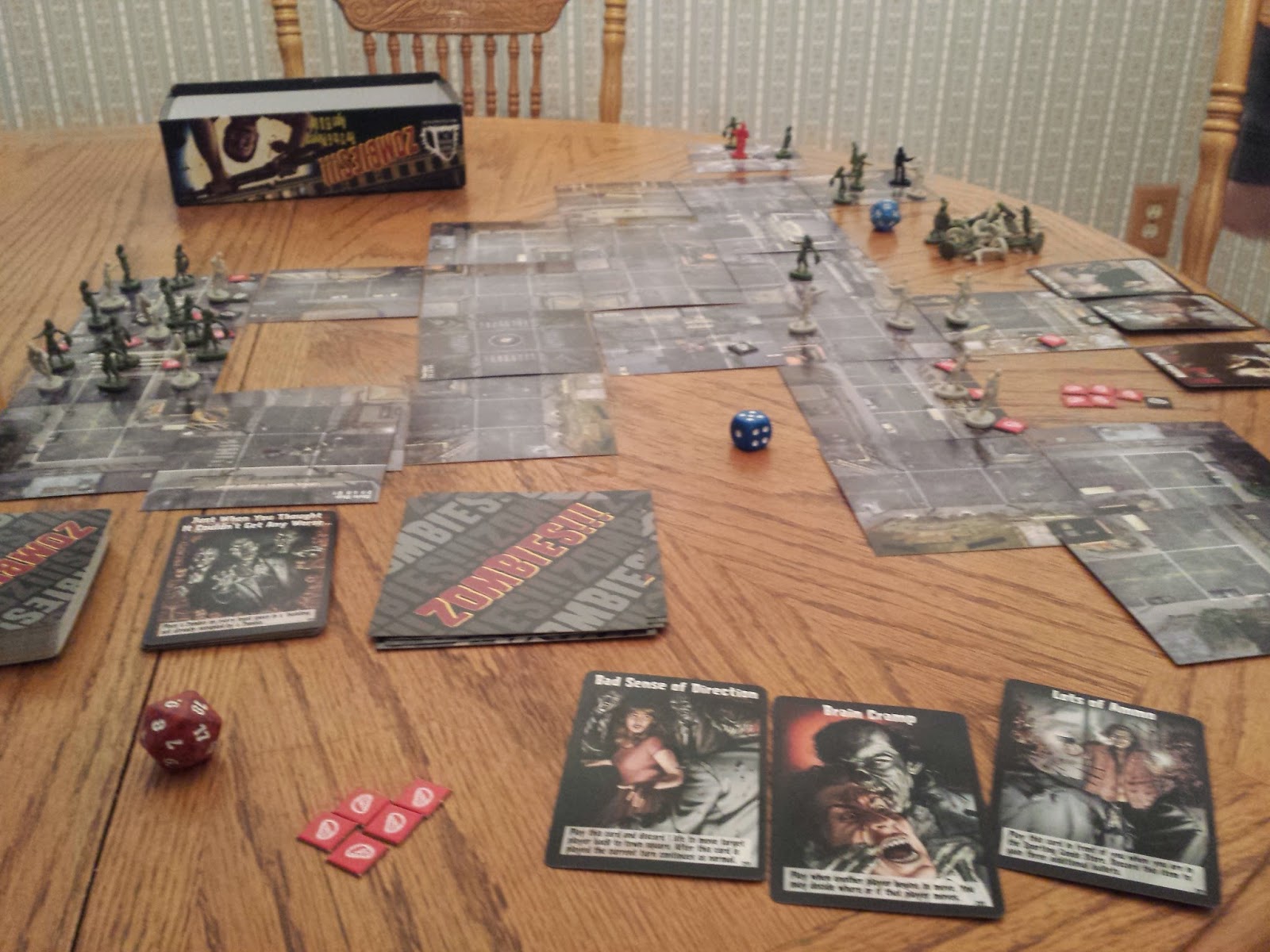We used the Labor Day weekend to play a new napoleonic scenario, "Rearguard at Schärding". My French were once again pitted against their old adversary, Mark's Austrians. Below is the scenario briefing.
On April 10, 1809 Archduke Charles’ surprise invasion of the Kingdom of Bavaria put the Grande Armée of Emperor Napoleon I of France at a disadvantage. On April 19th, Charles failed to take advantage of his opportunities and Napoleon struck back with savage force against the Austrian left wing under FM Hiller. After battles on April 20/21 FM Hiller's troops were driven into a headlong retreat to the southeast. Having temporarily disposed of FM Hiller, Napoleon turned north with his main army against Archduke Charles. On April 22/23, the Franco-Germans defeated Charles' army and forced it to withdraw to the north bank of the Danube. Meanwhile, Napoleon sent MdE Bessières to pursue the Austrian left wing with minor forces. Not knowing that Archduke Charles had been defeated, FM Hiller turned back upon his pursuer, defeating MdE Bessières near Neumarkt-Sankt Veit. Once he found that he was alone on the south bank facing Napoleon's main army, FM Hiller retreated rapidly to the east in the direction of Vienna.
On April 24th Charles sent a message to FM Hiller ordering him to retreat to Linz, cross to the Danube's north bank, and join the main army. Hoping to overtake and destroy FM Hiller, Napoleon sent two new columns of Marshal Davout's III Corps and Marshal Masséna's IV Corps towards the Inn River in pursuit of his foe. On April 26th, GD Legrand of Masséna's IV Corps caught FM Hiller's rear guard of FML Kottulinsky still west of Schärding.
Here's a look at the map. The River Inn flows behind Scharding in the background.
This scenario was the first time we've had any significant amount of heavy cavalry in a battle. Nansouty’s Cavalry Division got me back to the workbench to get them ready for this fight. We're continuing to get the feel of these rules. They definitely have a more strategic feel and I have to remind myself not to think too tactically. Time, distance, and combined arms are critical factors you have to incorporate into your planning.
The Austrian battle line forms well in front of the river crossing.
 |
| The Austrian Center |
The French come onto the field.
The French strategy was to pin the flanks and send in the heavy cavalry division as quickly as possible against the Austrian right center which was made up of a line of infantry in the open. The goal was to punch through there and race for the river crossing.
 |
| The French 1st and 2nd Carabiniers wait to advance. |
I spent a few mores turns than normal advancing the French infantry and artillery to support the cavalry attack. These rules force opponents to take a morale check when fired on by artillery so you have to make the decision of whether to take more time to deploy or get artillery forward fast. Firing early and more often may inflict morale damage and break a unit as opposed to moving in fast and getting in close range to cause damage. I think future actions will see me moving my #6 batteries in closer to the point of attack.
The 1st and 2nd Carabiniers went in on around turn 4-5. The brigade attack was broken up by some lousy morale checks before it hit home. The Austrian artillery on the French right did heavy damage but three battalions of French advanced undamaged. It seems like the first unit to make contact really gets chewed up but that allows the rest of the attack to keep going.
 |
| French guns in action |
The French heavy cavalry was unable to break the Austrian squares but they would eventually grind them down. One key thing I learned was to advance artillery to pound the squares and achieve the breakthrough faster.
We played 11 turns and the French finally penetrated the Austrian center on the last turn. The Austrian left was under pressure but they still maintained a central reserve and had plenty of defensible positions before they reached the river.
 |
| French pushing the Austrian Center |
The Austrian artillery in this game was powerful. Their canister was devastating. French losses when we suspended hostilities were 4 infantry and 1 cavalry unit. The Austrians had lost 2 infantry units and had lots of stuff bleeding.
The Austrians rolled good morale all day and the French seemed to have trouble making the most of good attacks and keeping morale up. When we called it a day it looked like the French would get through the Austrian center but whether they could make a dash for the river crossing or not was still unclear.
All in all a great game. We'll try it again soon as we continue to refine our tactics. Thanks to Mark for hosting and a great looking table.
Order of Battle "Rearguard at Schärding" - (River Inn, near Linz) April 26, 1809
Austrian IV Corps
FML Kottulinsky
Ob Csollich
12# Battery (6 guns)
6# Battery (6 guns)
GM Weissenwolf
4th Line
49th Line
6# Battery (8 guns)
GM Hohenfeld
14th Line
59th Line (Hungarian)
6# Battery (8 guns)
GM Nordmann
St George Grenz
3# Battery (8 guns)
6th Chevau-Leger
7th Hussar
6# Horse Battery (6 guns)
French IV Corps
GD Legrand
12# Battery (6 guns)
GB Essarts
26th Leger
18th Line
6# Battery (6 guns)
Nansouty’s Cavalry Division
GB Doumerc
2nd Cuirassiers
9th Cuirassiers
GB Defrance
1st Carabiners
2nd Carabiners
Baden Contingent
Ob Neuenstein
Jäger Battalion
1st Guards
Crown Prince Charles
2nd Line
3rd Line
6# Battery (6 guns)
















































